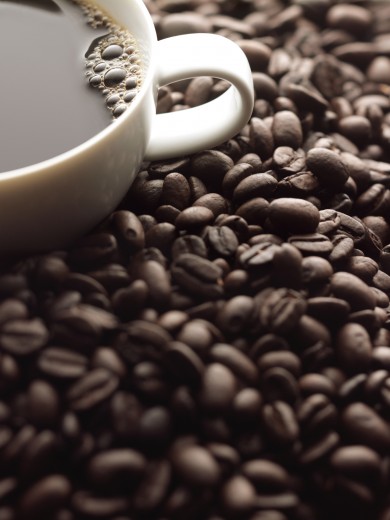How do you take your coffee? Maybe you equate your tastes in cafe to your preferences in women: light and sweet like that leggy blonde at the office; dark and bold like the mysterious brunette at the bar. Whatever your cafe preferences, we’ve done some homework to find out what’s percolating in our Latin American countries. From the strong kick of Cuban espresso to the flavorful varieties of Guatemala’s roasts consider this your GPS to the best coffee you’ve never had. Who knows you might decide after a little flirting to fully commit to a taza … or two.
Puerto Rico- The Story:
Situated on the southwestern part of the island Yauco dubbed “El Pueblo del Café” was once considered one of the most prolific coffee-producing regions. In the 1800s this tiny mountain town consisted of Corsican expats who surveyed the region and decided they wanted a piece of the crop action. The fruit of their labor produced the rich, aromatic café that was later exported to such dignitaries as the Pope and Spanish royalty.
Best Blend: Yauco Selecto
Heralded as one of the top 10 coffees in the world by The Wine Spectator, Yauco Selecto is a full bodied blend that features a buttery bean flavor with a hint of chocolate undertones. It helps that they brew their beans in small batches to maintain the quality control.
Brazil- The Story:
Beautiful women and caipirinha aren’t the only exports Brazil has to offer; sublime coffee catapulted the country into the undisputed producing powerhouse which produces 35% of the world’s coffee. “Coffee from [Latin America] has a great nutty taste that you can’t get from anywhere else,” says Juan Romero, owner of the East L.A. based Primera Taza Coffeehouse. “They have a bright flavor with great aromas.” Brazil is known for this type of nut-based flavor thanks in part to the Arabica Bourbon bean that is roasted there.
Best Blend: Brazil Santos
The next time you’re in Sao Paulo for business (or pleasure) ask the local barista for Brazil Santos. What makes this blend so enticing is how the beans are picked and processed. Santos is made with a natural “dry process” where beans are dried in the sun for several weeks before being separated and roasted. That allows most of the bean’s sweet goodness to land right in your cup.
Guatemala- The Story:
What makes Guatemala a great coffee producer? One word: diversity. The Central American boasts eight different regions of varying climates that makes each a prime location for coffee production possibilities. From the Antigua Valley to the Cohan rainforest each region provides the right climate for raising coffee plants. Guatemalan coffee farmers take pride in cultivating and promoting sustainable and organic production processes.
Best Blend: Antigua
The oldest and most well known, Antigua will definitely shake up your routine. Romerto recommends this coffee for its “medium body and chocolate flavors”. Coffee experts describe this blend as having a spicy aroma. The wet process where beans are soaked and then dried in the sun accounts for its pure flavor since extra residue is removed before being roasted.
Cuba- The Story:
There is nothing more Cuban than good ol’ cafécito. You can thank the French for that! After fleeing Haiti’s revolution, French farmers settled in Cuba and picked up where they left off. While the communist country’s coffee is embargoed for export you’re likely to find a ton of Americanized brands (Bustelo for instance) at your local bodega or supermarket. Don’t let the demitasse cups fool you, Cuban coffee is hella’ strong.
Best Blend: Pilon
Pilon is known for being the largest Cuban-style coffee sold outside of its native country. Its sister brands: Café Bustelo and El Pico although mostly Americanized brands, are very much staples in many Latino households.
Mexico- The Story:
Coffee may not immediately come to mind when you think of Mexico, but our South of the border neighbors have been growing and brewing café for centuries. In fact, their beans are the foundation for most coffee blends and are known for being light, nutty and with a chocolate overtone. According to Romero some of the best blends come from Chiapas, Veracruz and Oaxaca regions.
Best Blend: Altura
Romero recommends this coffee for its “light, nutty, acidic snap.” For the novice that means it’s the way coffee feels as it lands on your tongue and stays on the roof of your mouth. Mexican café con leche is bigger and sweeter than its cubanita sister; it’s made with steamed milk and a hint of cinnamon.
If you found this article helpful. Check these out: Cigars of Latin America; Tequila Tutorial

